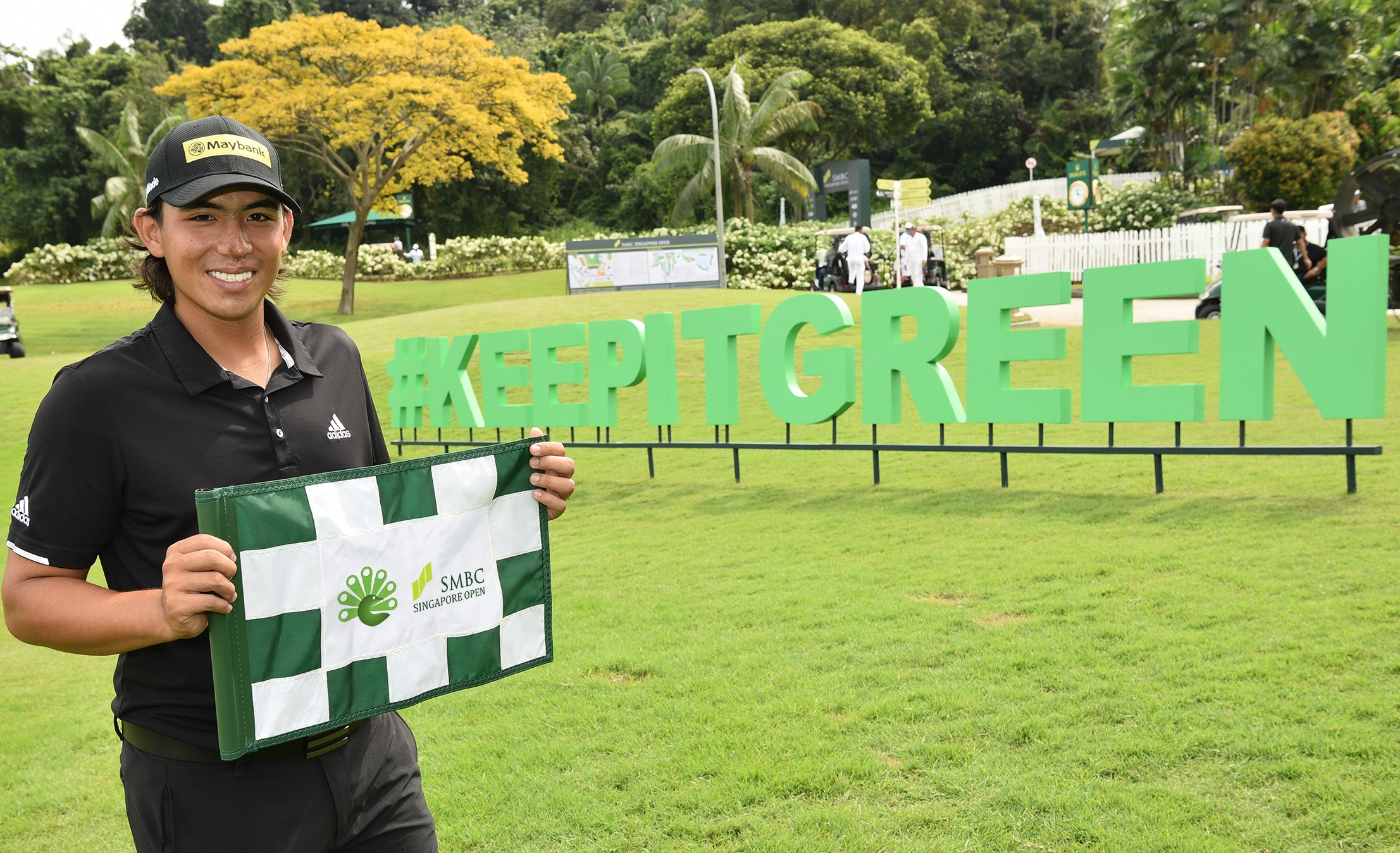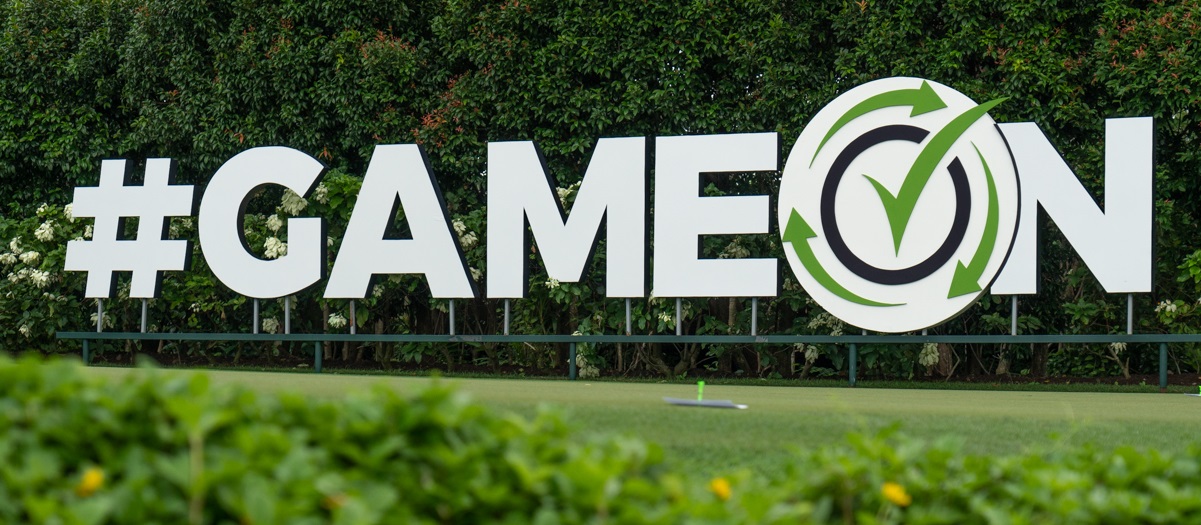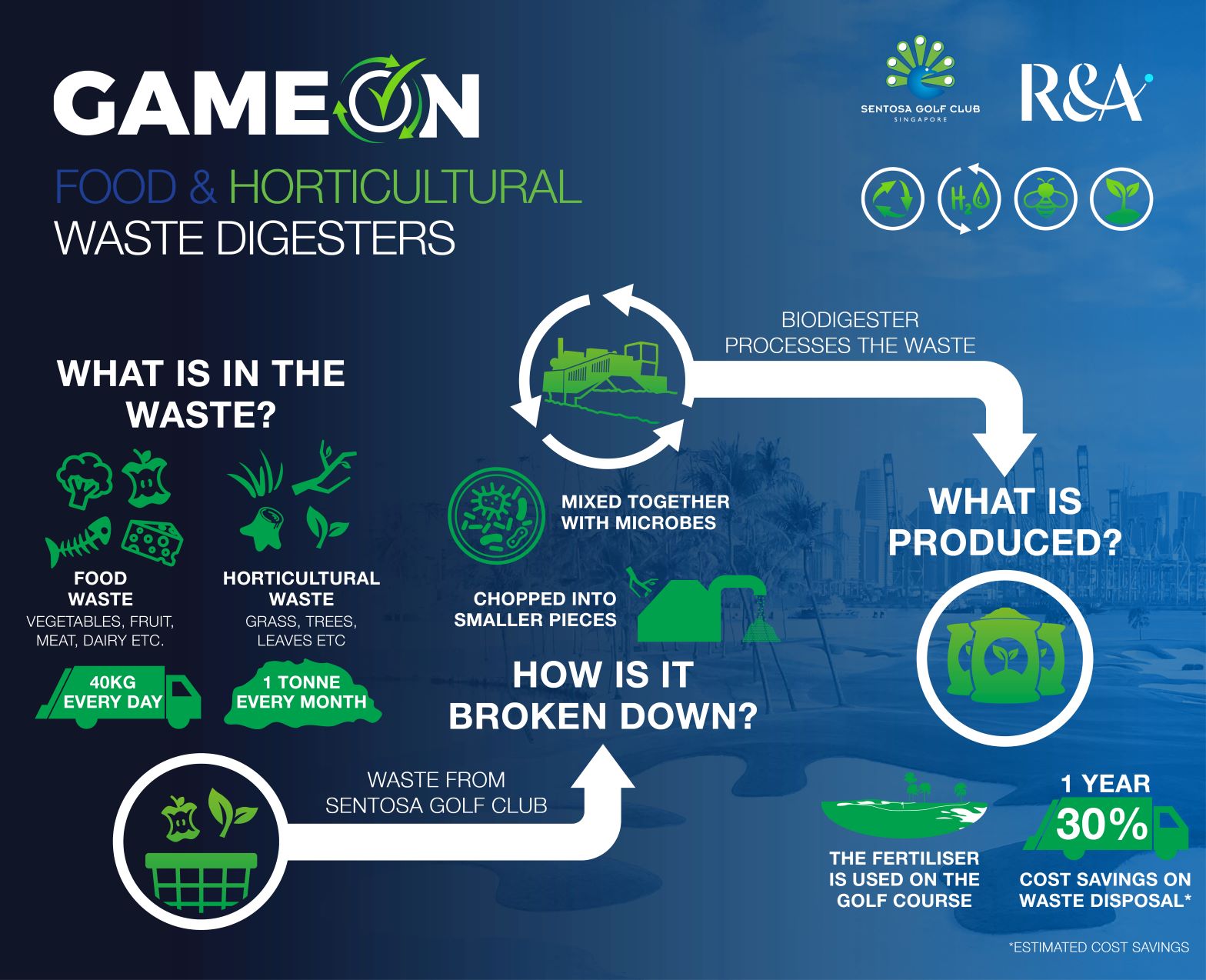A Q&A with Andrew Johnston, General Manager & Director of Agronomy at Sentosa Golf Club

Each and every one of the fairways on The Serapong has been rejuvenated
Home to two of the world’s best championship golf courses, The Serapong and The Tanjong, Sentosa Golf Club is widely renowned as one of the world’s greatest golf clubs. Situated on the premier island resort of Sentosa, also known as The State of Fun, Sentosa Golf Club has 1,500 members, many of whom are prominent personalities from influential circles, and its courses provide a challenging test for golfers of all abilities.
Since 2018, the Club has set out to become one of the world’s most environmentally sustainable golf clubs. Having previously demonstrated their commitments to creating a sustainable environment through their #KeepItGreen campaign, the Club launched a brand-new campaign, GAME ON, at the 2020 SMBC Singapore, designed to unite the game’s key stakeholders with the wider golfing community to raise awareness and fight the threat of climate change in the sport, as well as encourage clubs to implement modern sustainable processes and initiatives.
Last July, Sentosa agreed to a partnership with international not-for-profit sustainability organization, GEO Foundation, before becoming the first golf club in the world to pledge its support to the United Nation’s Sports for Climate Action Initiative. We caught up with the Club’s General Manager & Director of Agronomy, Andrew Johnston, to discuss the evolution of GAME ON and what is next on the Club’s sustainability agenda…

Andrew Johnston – Sentosa Golf Club General Manager & Director of Agronomy
Sentosa Golf Club launched their new ‘GAME ON’ campaign at the 2020 SMBC Singapore Open. How has the campaign evolved throughout the last 12 months?
Great question! Whilst the launch of GAME ON was certainly a highlight of 2020, my feeling is our global campaign is #KeepItGreen (KIG). The KIG campaign was launched in February 2018, and it is the guiding principle behind our sustainability master plan. In fact, KIG has become a way of life at the club and is ingrained in our culture.

Gavin Green Launches Sentosa Golf Club’s #KeepItGreen Campaign at SMBC Singapore Open
GAME ON is one of many outreaching efforts we have made over the past year to continue to keep up the awareness and the need to drive change within the game of golf. Additionally, it offers a vehicle to reach out and challenge everyone to play a part in the massive task of tackling climate change. Over the past year, we have continued our progression by joining the UN Sports for Climate Action Initiative, which allows us to be part of a bigger team working towards achieving the same goals.
We have established our carbon footprint and continue to work with GEO Foundation to understand further how we can improve our operational efforts and define what habits must be altered to reduce our carbon output even more. We have started adding electric charging stations at the Club, as well as acquiring bio-digesters to help reduce food and horticulture waste, which are just two of the many initiatives we have most recently introduced on-site to help minimize our greenhouse gases.

GAME ON was unveiled by Sentosa Golf Club at the SMBC Singapore Open
What was your thinking behind the Club becoming the first golf club in the world to pledge its support to the United Nations Sports for Climate Action Initiative?
We believe the initiative is a great platform to stand shoulder to shoulder with world leaders in sport, share our ideas on a global scale and define what matters. We are eager to work with the leadership in golf to help bond us together and hopefully inspire others to join the initiative with us and show the world how golf can make an impact.
We have committed to also joining the UN Sports for Climate Action Race to Zero programme and plan to roll out our own efforts to be Singapore’s, if not the world’s, first golf club to make the commitment to running its operations with a balanced carbon neutral operation and to continue to track and improve our carbon neutrality footprint year on year.
How will your partnership with GEO Foundation help the Club with its sustainability goals?
GEO is working closely with us to review our operational and sustainability efforts, as well as certify the data we are developing. They will help us explore and work out our carbon footprint calculation to determine the methodologies that need improving.
We are always looking to improve with the help of GEO, and together we are working on the world’s first carbon sequestration calculation for golf in a tropical environment. By achieving this first carbon sequestration calculation, we hope to share it with other golf clubs who operate in the tropics and offer them a way forward to improve their operations and sustainability efforts too.

Signing Sports for Climate Action Initiative (from l-r SGC President Andrew Lim, SDC Chairman Bob Tan, SDC CEO Thien Kwee Eng, SGC General Manager Andrew Johnston)
The Club was named the ‘World’s Best Eco-Friendly Golf Facility’ at the 2020 World Golf Awards. What does it mean to receive this accolade?
We were extremely honoured to have been recognized by our fellow industry professionals and golf consumers as the ‘World’s Best Eco-Friendly Golf Facility’. However, at the same time, we must remain humble and feel there are many areas that we can continue to improve on in terms of our sustainability efforts.
For us, there is nothing more crucial and important than taking care of the world we live in, and our efforts at Sentosa, which involves everyone from our committee all the way down to our guests, are based around our environmental sustainability vision for the future.
In September, Sentosa were awarded a Golf Sustainability Fund Grant by The R&A. How important is it for golf clubs to receive backing from the game’s governing bodies in their fight against climate change?
Here at Sentosa, we recognize The R&A as the leader in golf. Their Golf Course 2030 initiative and the efforts of Steve Isaac, including The R&A team in general, are the guiding light for all of us to follow. We use the guidance of The R&A to drive our vision forward and, as we continue to gain exposure, it is extremely important to point back to The R&A as the overarching leadership that is there to support us all.
Last year, we submitted an in-depth proposal to them on the use of bio-digesters. Our proposal was successful, and the Golf Sustainability Fund Grant has enabled us to invest in two bio-digesters, allowing us to deal with the two problems all businesses, especially golf clubs, have in dealing with their food and horticultural waste. Normally, this waste is sent directly to your local landfill and is one of the leading causes of methane leakages in the landfills. Our plan will allow us to decompose the waste in a very condensed timeframe using the biodigesters and redistribute the waste onto our two championship golf courses in the form of fertilizer.
With the help of The R&A’s funding and the acquisition of the bio-digesters, we can begin an in-depth study to show how this can reduce inputs and reduce our carbon footprint and move towards running carbon-neutral operations.

Sentosa Golf Club will become the first golf club in Asia with the ability to break down food & horticultural waste into fertiliser
How does the Club plan to further expand GAME ON in the next 12 months?
On top of all the initiatives we have so far implemented from our sustainability masterplan, we plan to employ a sustainability officer later this year to help track and coordinate the larger picture of the plan to define and measure our success and failure.
This is extremely important as it will allow us to study the methods we can improve. Additionally, we will be rolling out a creative programme in April that will allow us to essentially take $1 from every round of golf and use it as an offset to reach carbon neutrality. This is just the beginning of our journey to take on the challenge of driving less carbon output and improving it year-on-year.
What advice would you give to golf clubs looking to start their environmental journey and implement sustainable initiatives?
Tomorrow never gets here. Why? Because it is always tomorrow.
Start today, take it one day at a time, and over time it will add up to make a difference. But, to make a real difference, you must invest in your people first. Take the time to teach them, coach them on the problems, why they must be improved, how the problems contribute to the world’s issues, and if corrected, what an impact they can make. When you get the buy-in of your whole team, they will become the best tool you have to fight climate change at work, at home and in the community.
How important is it for other golf clubs around the world to embrace sustainability and play a significant role in the fight against climate change?
Everyone throughout the world and the golf industry must embrace sustainability if we expect our children and grandchildren to have a safe world to live and play in. The entire package surrounding our GAME ON campaign is designed to be a call to action for us to engage in a sustainable way of life before we reach the point of no return and it becomes game over.
As part of the campaign, the latest initiative we undertook was the release of our GAME ON documentary, which coincided with us being named the ‘World’s Best Eco-Friendly Golf Facility’ at the World Golf Awards. The film aimed to serve as golf’s response to climate change and help clubs around the world to understand the importance of reducing their carbon footprint by showcasing a number of the key cost-effective measures that can be implemented at a golf club, such as the creation of bee colonies and the banning of all single-use plastics.
The Serapong, widely voted as ‘Singapore’s Best Golf Course’, recently reopened in December after nine months of renovations. Did sustainability play a part in how the renovations were undertaken?
The Serapong has exceeded our expectations. It really looks great, and we have taken great pride in the renovations. We have taken one of the world’s Top 100 golf courses and made it even better than before, as well as proofing it for the future.
Absolutely, sustainability played a major role in how we tackled the project. One of the key success stories of the renovations was how we were able to completely restructure the soil profile of the greens without having to actually rebuild or dig up any of the greens.
The Serapong’s iconic 5th hole has seen extensive renovations to its bunkers
How have the renovations helped to improve The Serapong?
Well, it will certainly take time for a number of the key aspects of the renovations to be seen, but it definitely plays better than before for sure and now requires less water, less herbicides, and less fertilizer than ever to maintain. It is more consistent than it has ever been.
Search
Other News
- Sentosa Golf Club Enters 10-Year Partnership with Toro
- Andrew Johnston Hits Heights with Sentosa to Become One of the ‘Most Innovative People in Golf’
- Sentosa Golf Club’s Serapong All Primed to Host the SMBC Singapore Open
- Malaysia’s Gavin Green Back in Action at the Singapore International
- Korean Stars Im and Lee Hope to Start New Year With Some Fireworks
- Nostalgic Asian Tour Return for Charlie Wi
- Royal’s Cup to Debut on Asian Tour in 2022 at Grand Prix Golf Club
- New Year Cruise for Khalid at Faldo Series Pakistan Championship
- Reed, Finau, Smith Join the World’s Best With the PIF Announced as New Title Sponsor for Saudi International powered by Softbank Investment Advisers
- Paul Casey to Commence 2022 at SMBC Singapore Open
- More news...